Visual merchandising is the art of creating displays in your boutique that encourage customers to purchase your products. By strategically designing your boutique clothing display, wall display, and decor, you can make your items more visually appealing and increase the likelihood that people will make a purchase. This, in turn, can lead to a more profitable boutique business.
In our blog post today, we'll be sharing ideas for your boutique display, wall display, and clothing display to help you create a visually appealing and effective space that drives sales.
At Disha Fashion Institute, we've helped numerous students establish successful boutiques that stand out from the competition. The difference in the look and feel of these boutiques is clear, and it shows in the number of customers who enter the store and ultimately make a purchase. Join us as we explore the topic of transforming your boutique and learn how to create a space that attracts and retains customers.
Table of Content
Boutique Display Techniques Without Mannequin or Mannequin Alternatives
There exist various boutique display approaches that do not rely on mannequins or other conventional alternatives. Rather, these methods employ folding and presentation techniques to showcase the garments or accessories.
#1 Lay Down Display
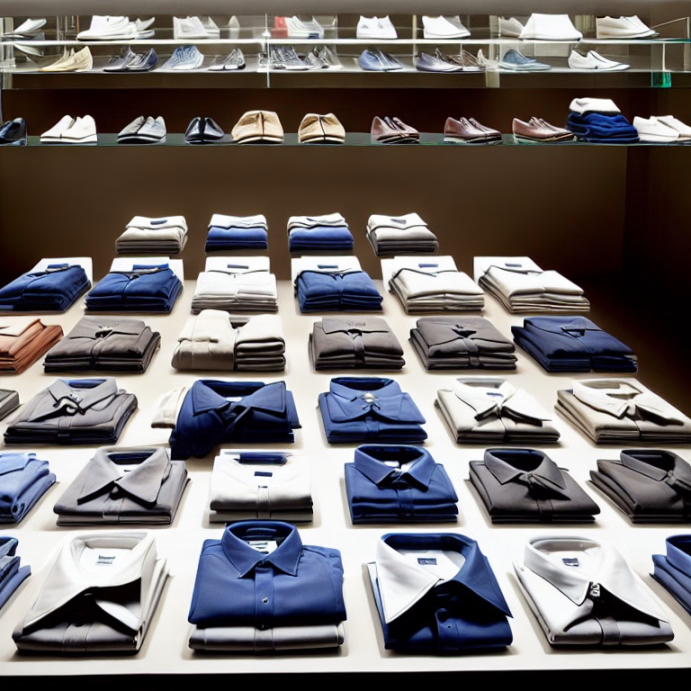
- A laydown display refers to a method of presenting merchandise where items are placed horizontally on a surface like a table or platform. The purpose of this display technique is to showcase the products in a way that makes it easier for customers to visualize how the items might look when worn or used.
Similar to other kinds of displays, a lay-down exhibit requires consideration of factors like color, line, and composition. It's important to be mindful of the material's texture and nature and how it's showcased. For instance, a row of crisp, stiff shirts should be organized into precise blocks or squares that indicate formality and exactitude. Meanwhile, soft, draping scarves ought to be arranged in a way that gives the impression of undulating lines.
However, a disadvantage of this approach is that it fails to account for the human element of the exhibit - the viewer is forced to rely on their own interpretations when it comes to envisioning how the clothing will look when worn by an actual person.
#2 Pin-up Display
Pin-up techniques effectively elevate the lay-down method by transforming it from the horizontal display to a vertical form. Typically, lay-down displays are situated on a table, on the floor of a window, or against a raised platform. On the other hand, pin-up displays involve attaching clothing items to a wall or partition, in such a way that allows the observer to visualize how they would all fit together, as part of an outfit.
In the same manner that padding can augment the appearance of a hanger-based display, a combination of tissue, foam, and other materials can be utilized to create the illusion of a human form. Check the below picture to understand the concept.
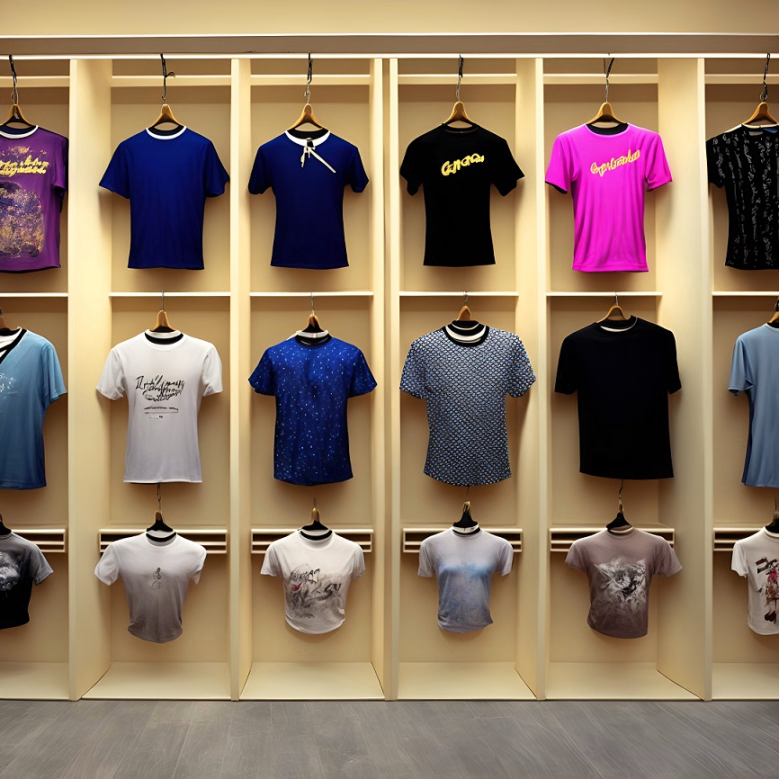
#3 Flying Display
‘Flying’ is the name given to the display practice of positioning clothes so that they appear to be floating in the air. It is particularly effective, when showcasing the same items across a range of colours and patterns. For example A range of highly-structured handbags could be displayed in this way. It works well for other relatively small items, such as shoes, lightweight cooking utensils and even packets of food.
Boutique Display with Mannequin
What is a mannequin?
I assume you already know what a mannequin is. If not the let me give you a brief description.
- A mannequin is a three-dimensional model of a human figure, typically made of plastic or fiberglass, used to display or fit clothing. Mannequins come in various sizes and shapes, and can be posed in different positions to showcase different clothing styles. They are commonly used in retail stores, fashion design studios, and for window displays. Mannequins can also be used in art installations, photography, and film production.
Advantages of using mannequin display in a boutique
Evidently, mannequins can add a human element to the boutique display. They enable the customer to visualize how they would look wearing the displayed outfit.
Apart from this, mannequins can add many more values. It can be useful in branding. That means, a mannequin not only server the purpose of displaying merchandise but also it provides an opportunity to make statement about the brand's values and mission.
For example a store that makes use of mannequins of various ethnicities making a clear statement regarding the inclusivity and diversity.
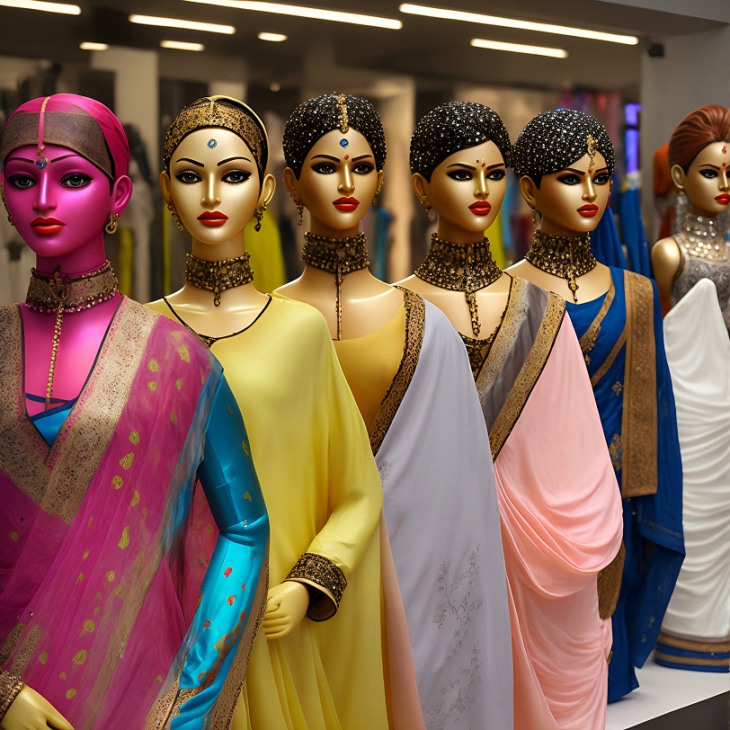
Various types of Mannequins
#4 Realistic Mannequins
The first type of mannequin used in stores looked like a movie star with perfect looks and style, but it wasn't meant to represent customers. It was meant to make customers want to be like the mannequin. Nowadays, mannequins are starting to look more like real people. They still look beautiful, but they have more realistic poses, hair, and skin tones. This means they look more like the actual customers who come into the store.
One example of this is the use of mannequins to represent pregnant women. Maternity wear can be a difficult area for retailers to display, as it can be challenging to showcase the fit and style of clothes designed for a changing body. By using mannequins that resemble pregnant women, retailers can better display these clothes and help customers better visualize how they will look and fit.
Similarly, plus-size mannequins are becoming more common in retail stores. These mannequins are designed to represent a more diverse range of body types, promoting body positivity and inclusivity in the fashion industry. By displaying clothes on mannequins that better represent their customers, retailers are better able to connect with and serve their customers.
In addition to representing diverse body types, mannequins are also being designed to reflect different ethnicities. This is important in a world where diversity and inclusivity are increasingly important, both in society and in the fashion industry. By using mannequins that better represent a wider range of ethnicities, retailers can better connect with and serve their customers from different cultural backgrounds.
#5 Abstract Mannequins
Abstract mannequins are now commonly used in fashion displays. These mannequins have a simple, sleek appearance and are often white or black in color. They don't have any visible muscle definition, and their limbs are long and slender. Their heads are also smooth with no hair. Abstract mannequins provide retailers with the flexibility to display almost any style of clothing, whether it's formal or casual. They are suitable for a wide range of display settings and can create a minimalist and modern look.
#6 Semi-abstract Mannequins
Semi-realistic mannequins are a blend of abstract and realistic mannequins. They have some realistic facial features but are stylized in a way that suggests a particular type of person. These mannequins are often sculpted with defined features but without makeup or skin tone variations. They can be used to display a wide range of clothing types, including lingerie, sportswear, and career wear. Semi-realistic mannequins offer retailers a balance between the abstract and the realistic, providing an attractive display option that appeals to a broad range of customers.
#7 Headless Mannequins
As the name implies, these mannequins have arms, legs and torsos, but the head is missing. The body may be realistic, semi-realistic or abstract. They are available in a range of poses, from standing to reclining. Headless mannequins have become a popular choice for boutique displays. They offer several advantages over other types of mannequins.
Firstly, because they don't have hairstyles or makeup, they never go out of style, which is a significant concern for retailers.
Secondly, they have no facial features, making them more inclusive and less likely to alienate any particular age or ethnic group.
Thirdly, they are easier to dress than traditional mannequins. Lastly, they are often cheaper than other types of mannequins since they require less material.
All of these factors make headless mannequins an excellent choice for small size boutiques looking for an affordable and versatile display option.
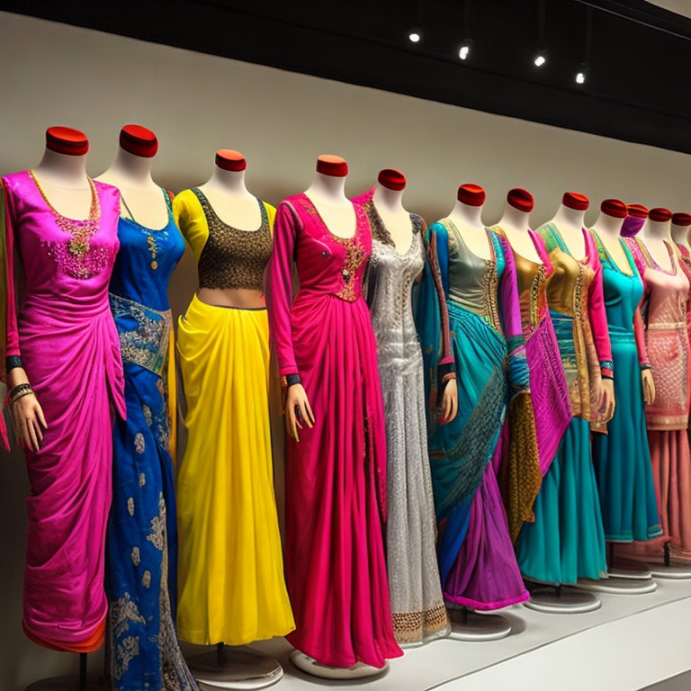
Boutique Displays Using Mannequin Alternatives
Although mannequins are a popular and effective way to display merchandise, they may not always be the most suitable option. Additionally, it's not always feasible or practical to use mannequins for every display item.
#8 Hangers
A creative and experienced merchandiser can make an attractive display, using little more than a hanger suspended from a ceiling or hung on a hook stuck to a wall. A hanging technique entails placing the clothes on the hanger in such a way that they resemble an outfit in its entirety. If necessary, shoes and accessories can be positioned in close proximity to the display. An ordinary coat hanger is not the ideal basis for this form of display. Instead, large, padded hangers should be employed, and it may be necessary to pad out some of the clothing, in order to create a semi-realistic effect.
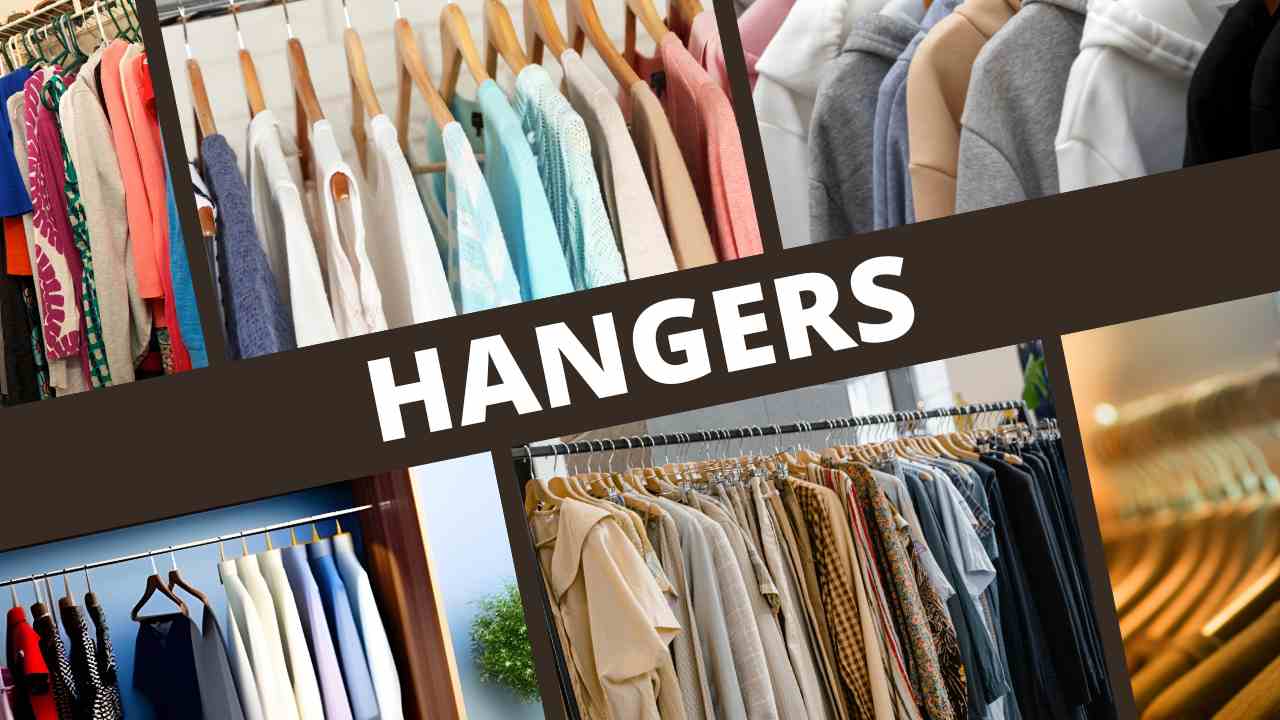
#9 Three-Quarter Forms
These structures replicate part of the human anatomy. They always include the torso and the chest, but they can vary in several other respects. Some also replicate the area from the hips down to the ankles, whereas others replicate the area from the shoulder to the waist.
#10 Three Quarter Dress Forms
A three-quarter form may or may not have arms – when the arms are absent, the term ‘dress form’ is often used instead. They are often erected using a rod and base, but can also be placed directly on a shelf or floor. They are easier to dress than regular mannequins and a easier option for display purposes, thanks to their lack of detailing. Sometimes these are mounted on a cast iron base with wheels.
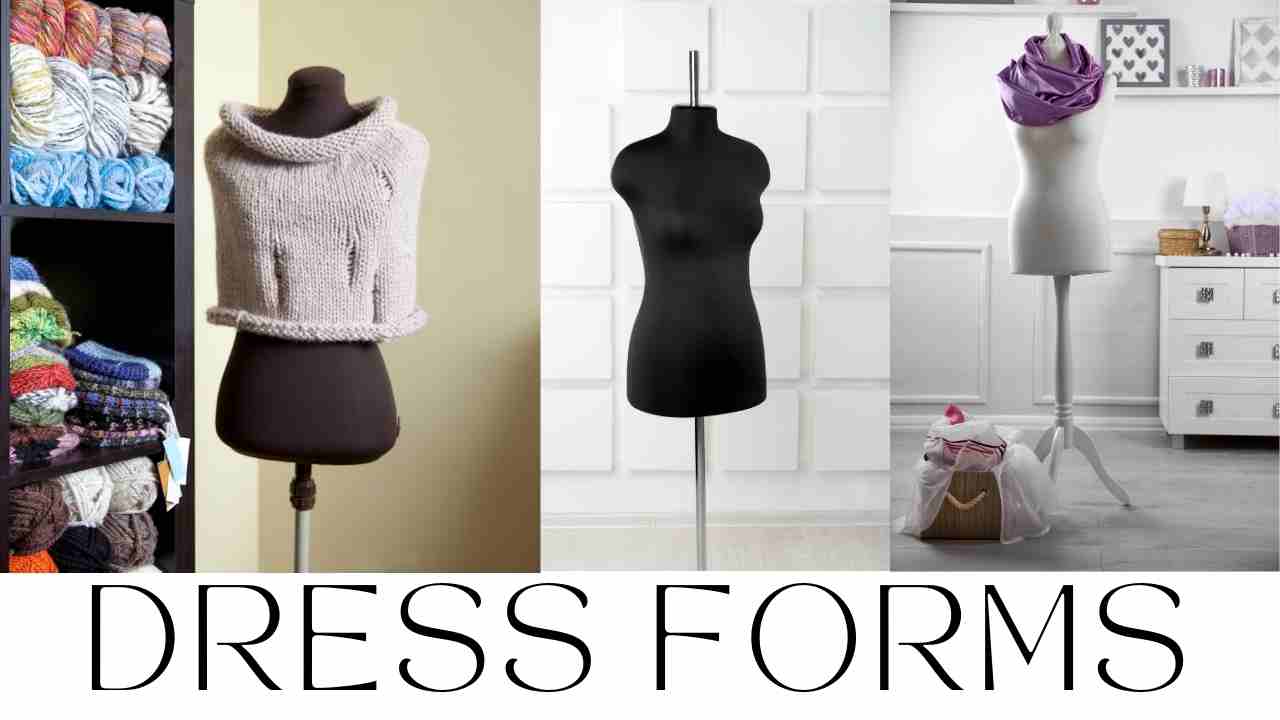
The three quarter dress form is a commonly used tool in the fashion industry by both tailors and fashion designers for a variety of purposes, including taking accurate measurements of garments and creating prototypes of new designs.
Boutique Wall Display Ideas
There could be many visual merchandising technique that can be used in your boutique to grab attention of the customer. Let us discuss the wall display ideas at first.
#11 Create a Gallery Wall
A gallery wall is a great way to display a variety of products in a cohesive and visually appealing manner. Group together art prints, mirrors, and other wall decor with complementary colors and styles. Then, use shelving or display racks to showcase your products in between the art pieces. This is a great way to create a unique and eye-catching display.
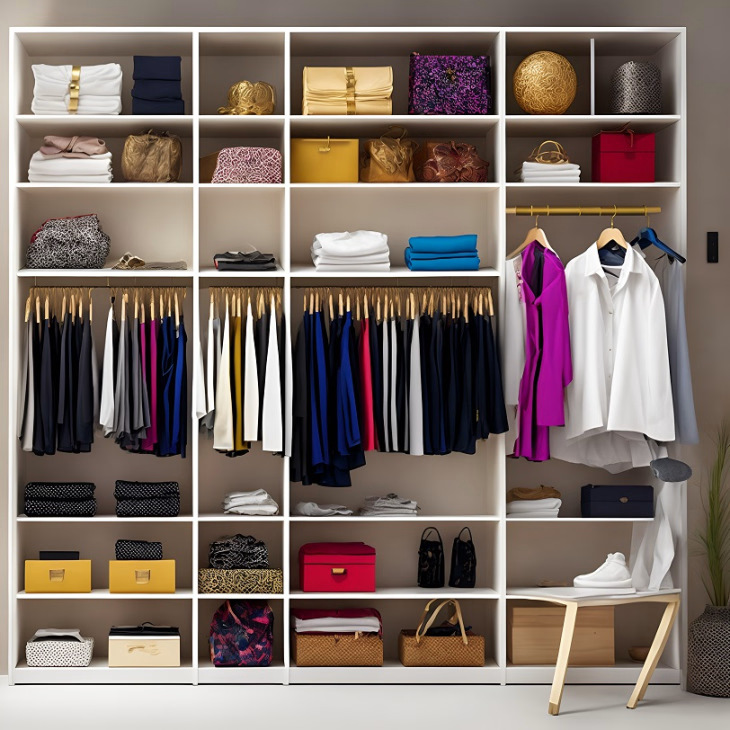
#12 Use Decorative Hooks
Decorative hooks can be a stylish way to display your clothing and accessories. Instead of hiding them in a closet or on a traditional rack, hang them on the wall using decorative hooks. Not only does this make your products more visible, but it also adds a decorative touch to your store.
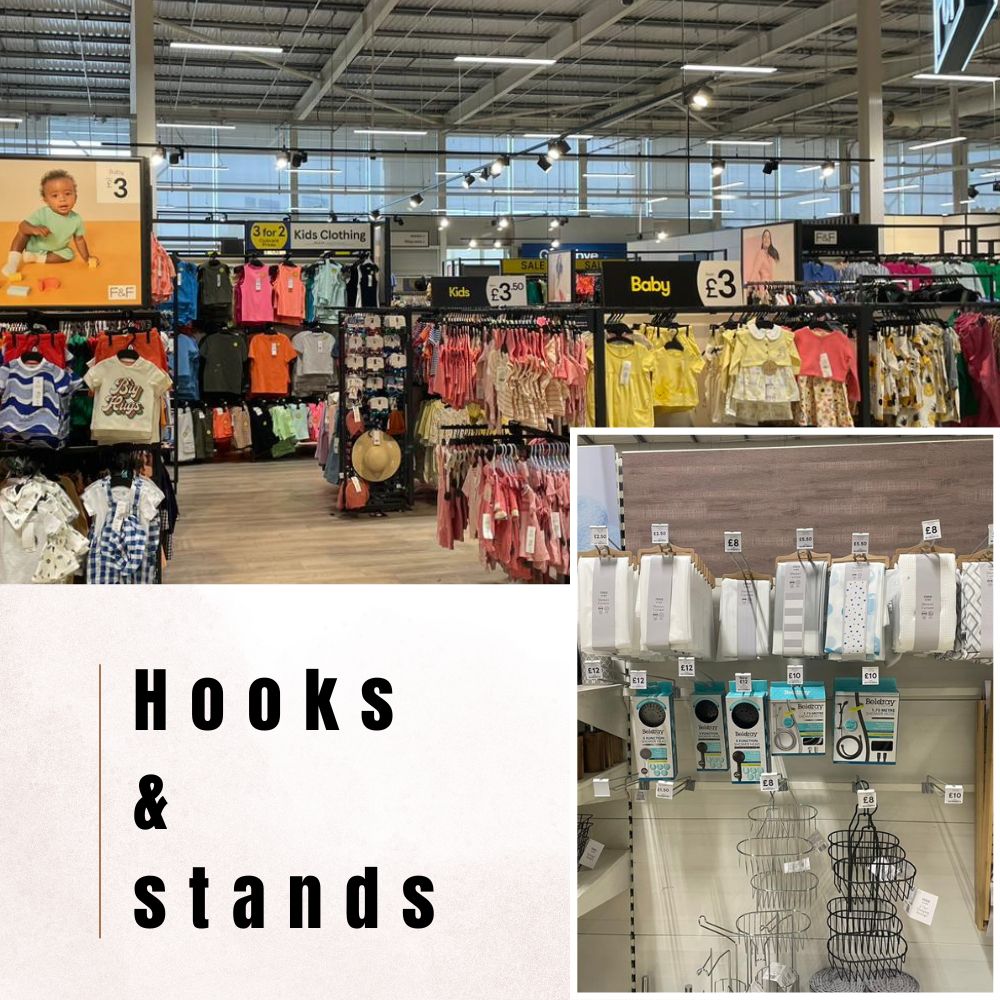
#13 Install Shelving
Shelving is a versatile way to display a variety of products on your boutique wall. You can use floating shelves, ladder shelves, or bookshelves to showcase your products. Arrange your products in a visually appealing manner, using color and style to create a cohesive display.
Boutique Clothing Display Ideas
When it comes to clothing displays, it's important to showcase your products in a way that is both visually appealing and functional. Here are some boutique clothing display ideas to help you achieve both:
#14 Organize by Color
Organizing your clothing by color can make your boutique look more organized and visually appealing. Use a color wheel to group together complementary colors, or arrange your clothing in a rainbow pattern. This is a great way to create a cohesive and eye-catching display. Do you want to know more on what is contemporary color?
#15 Cross Merchandising
Cross merchandising would involve displaying clothing items with other products that are complementary or related in some way. Below are few examples.
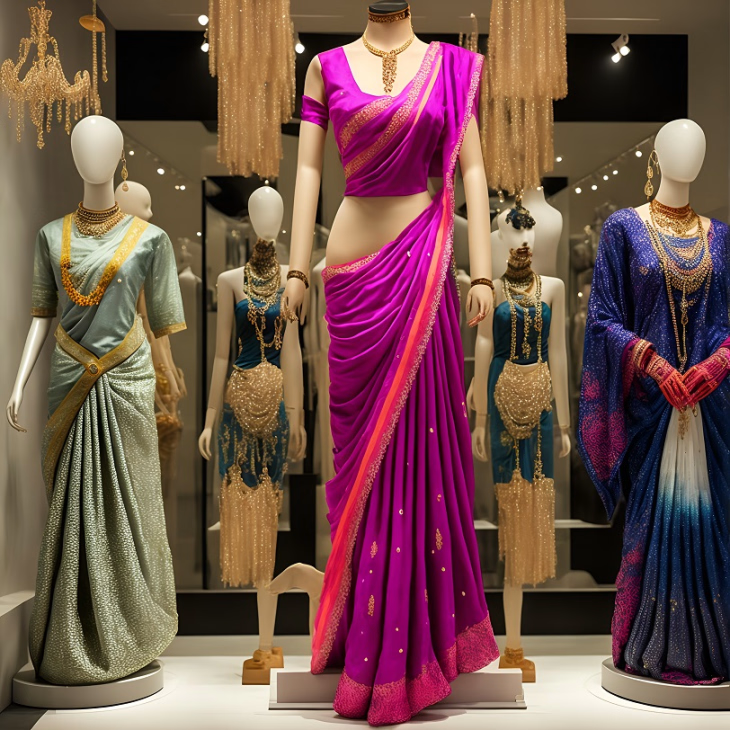
- You can display a dress with a matching necklace, earrings, and purse, to show customers how the entire outfit could look together.
- You can display a saree with matching bangles, earrings, and a bindi to show customers how the entire outfit could look together.
- Another example would be displaying a salwar kameez with a dupatta, bangles, and jhumka earrings to create a complete ethnic outfit.
#16 Use of Signage
Signs serve as a wayfinding tool for customers within the store and also inform them about ongoing promotions or offers. They can be placed in various locations such as hanging from the ceiling, attached to windows, printed on tent cards, displayed next to the products, or positioned on top of a pedestal within a Perspex window. Some signage systems are designed for easy sign changes, with frames and hooks that can be conveniently removed and reinstalled from the ceiling. Drop sign systems offer retailers the option to raise or lower signs, which can create visually appealing displays.
Handwritten signs can boost sales by approximately 70%, while professionally printed signs can increase sales by 165% when compared to products without any signage.
Conclusion
In conclusion, visual merchandising plays a critical role in making your boutique stand out and driving sales. Through the creative use of various boutique display techniques, such as the laydown, pin-up, and flying display, you can showcase your merchandise in a visually appealing way that makes it easier for customers to visualize themselves wearing the products. Mannequins also remain an essential part of boutique display, offering a more human element and helping customers to see how an outfit might look when worn. By using realistic mannequins that represent a diverse range of customers, boutiques can make a statement about their brand values and mission, while increasing their appeal to a wider audience. With the right visual merchandising techniques and the right use of mannequins, your boutique can attract and retain more customers and ultimately become more profitable.
Visual merchandising is a vast topic, and we will be publishing more blog posts about it in the future. Remember to bookmark our page to stay updated.

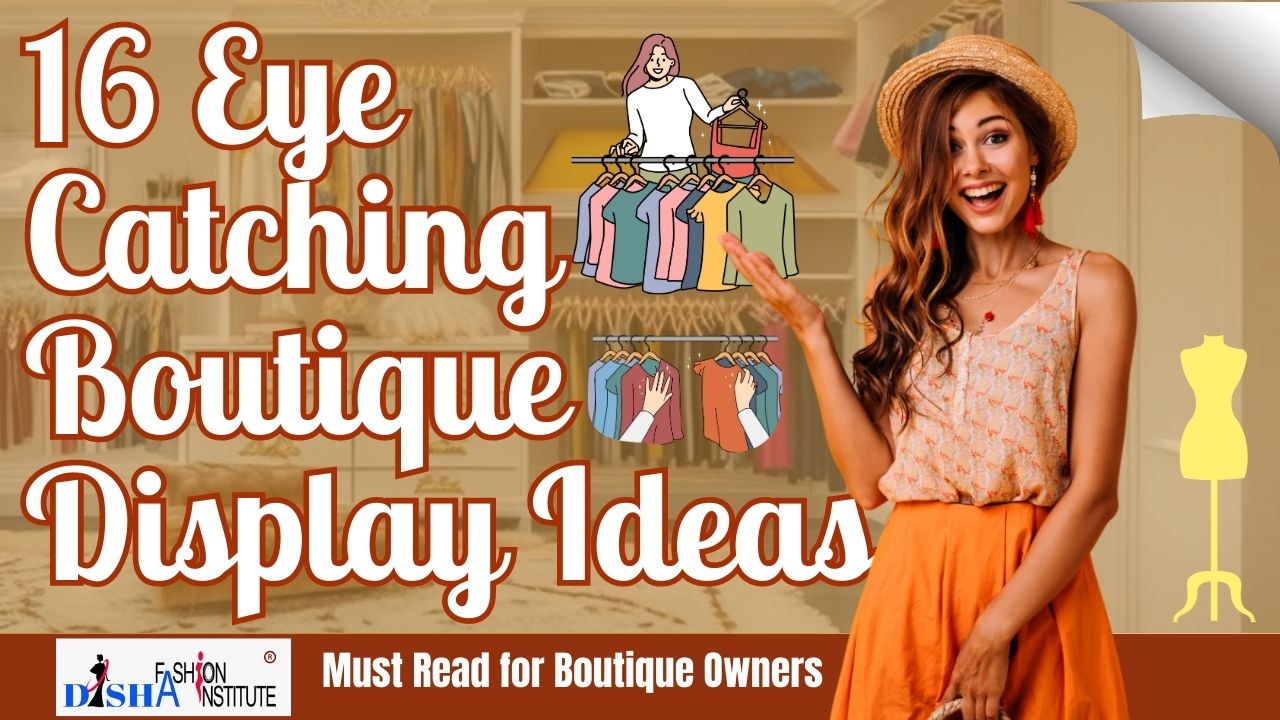
Add comment